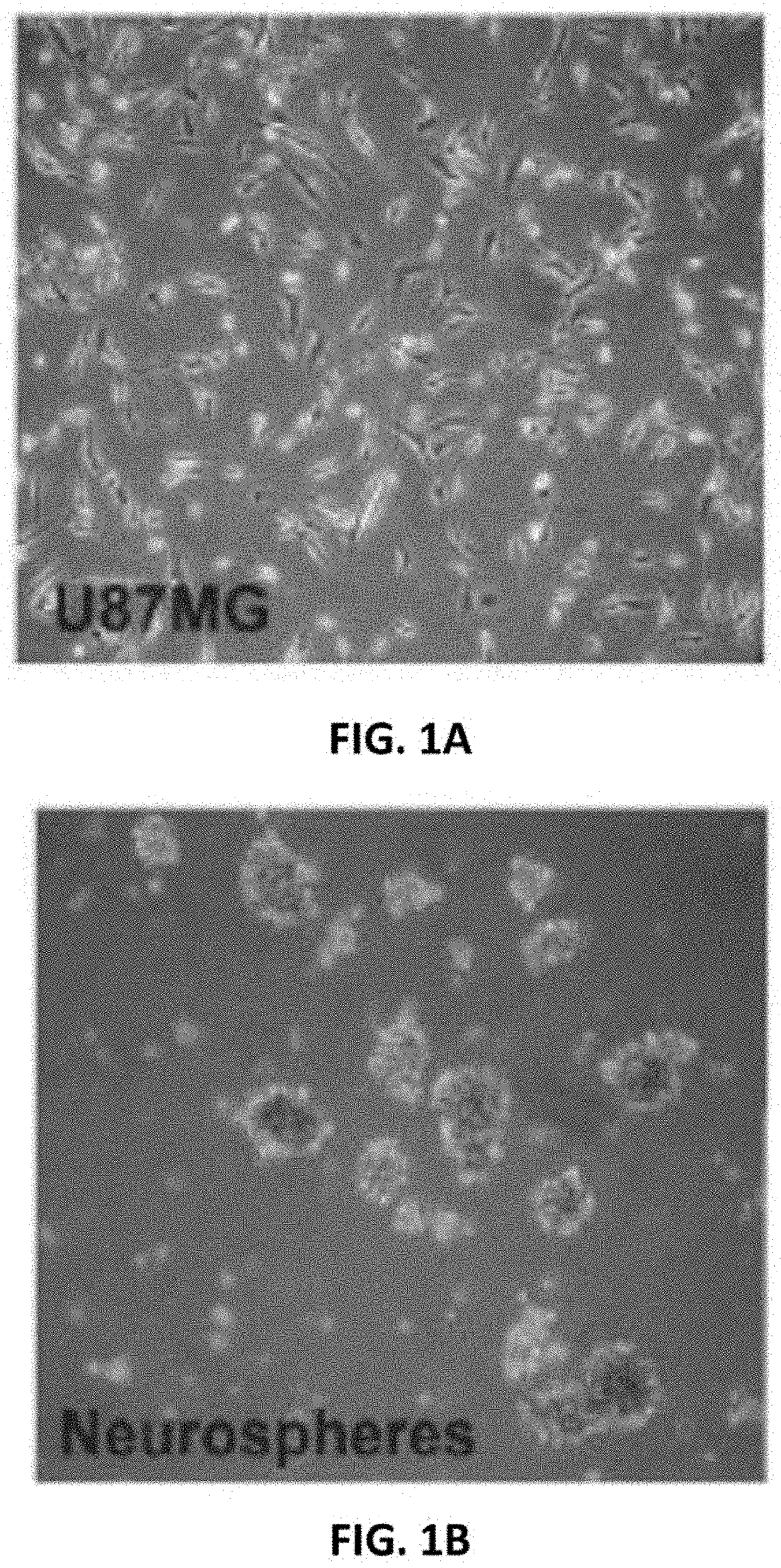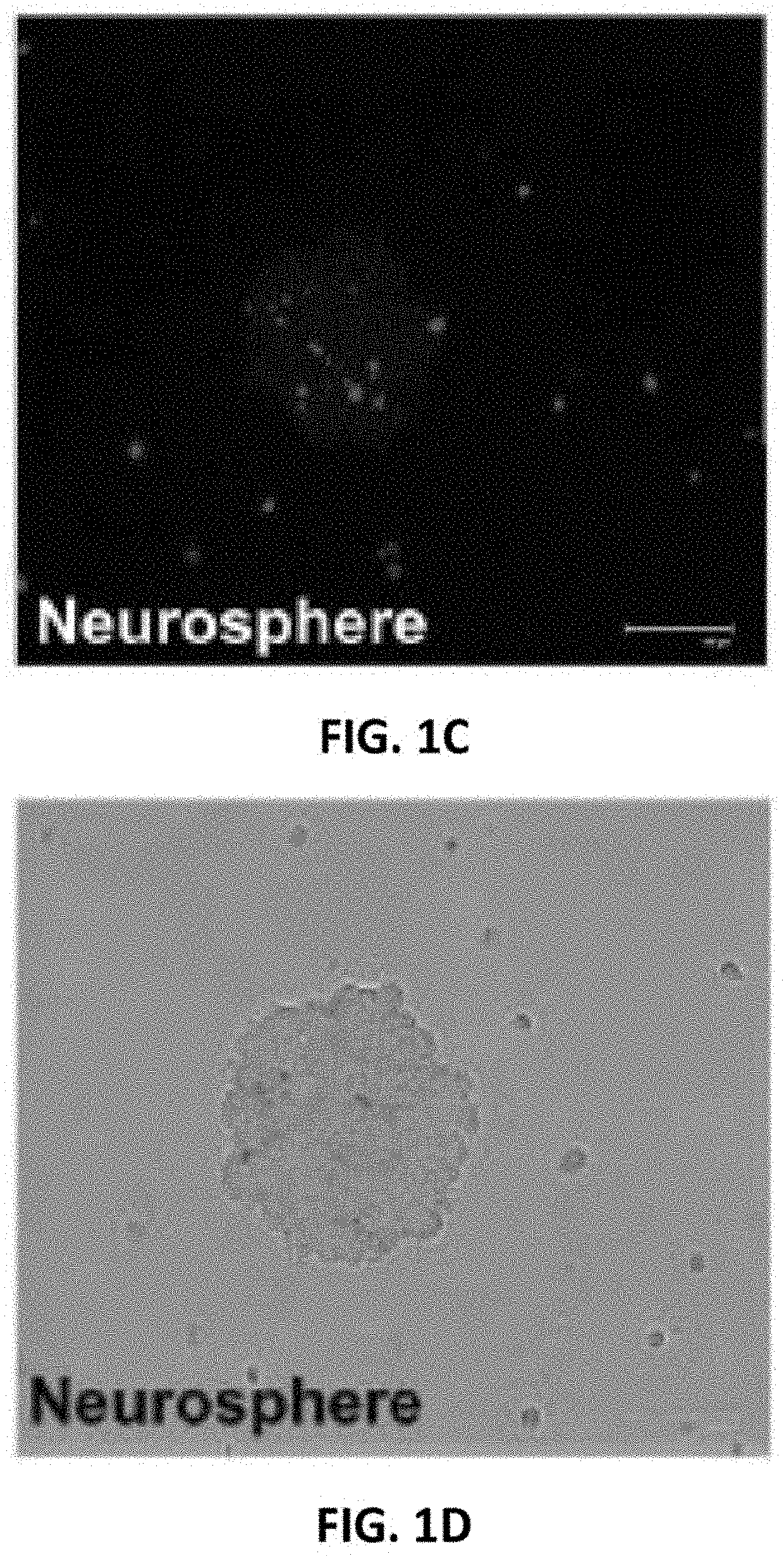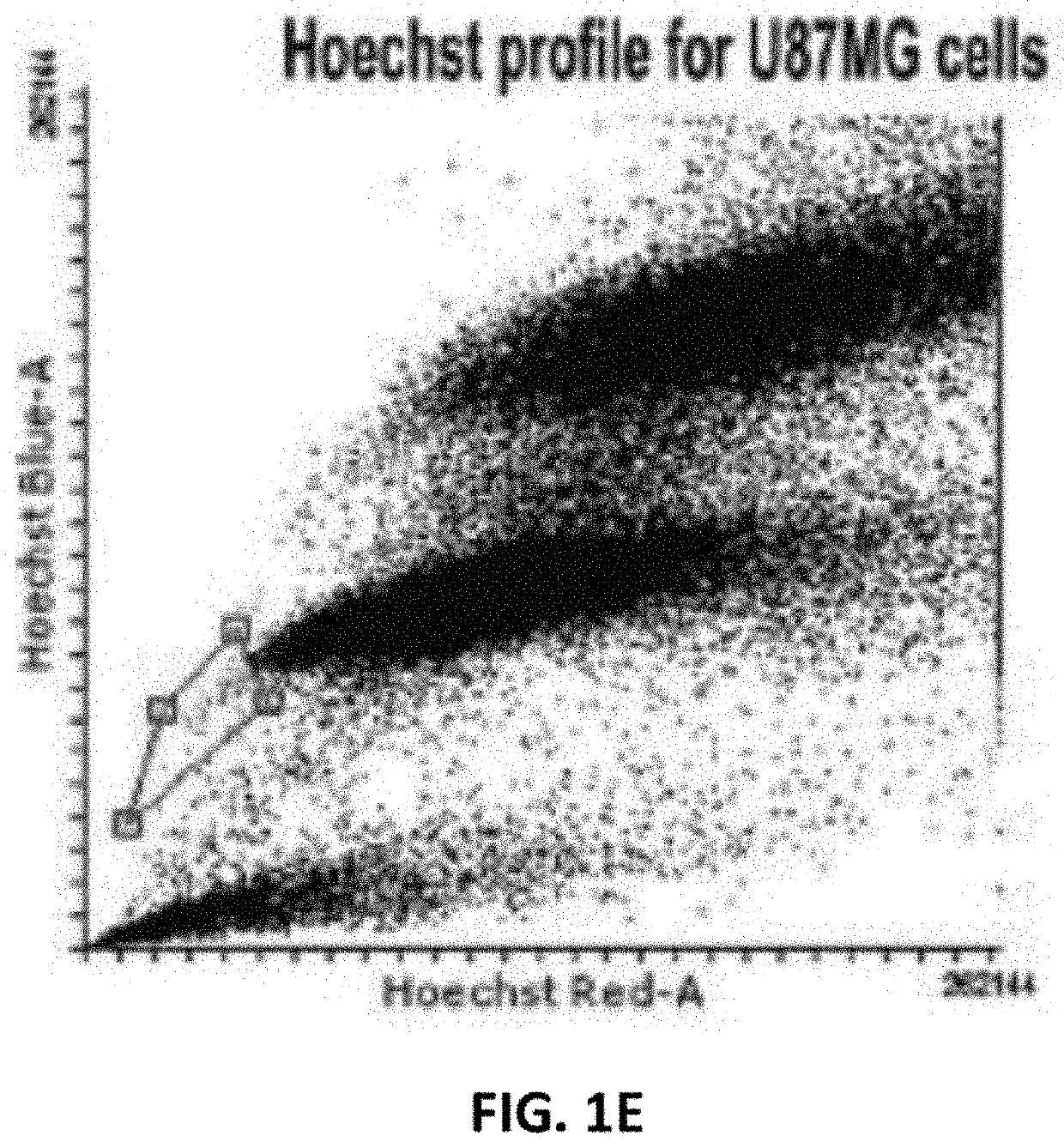Temozolomide resistant cells and an integrated method for characterizing the same
a technology of glioblastoma cells and temozolomide, which is applied in the field of temozolomide resistant glioblastoma cells, can solve the problems of incomplete understanding of susceptibility and resistance, and achieve the effect of avoiding relaps
- Summary
- Abstract
- Description
- Claims
- Application Information
AI Technical Summary
Benefits of technology
Problems solved by technology
Method used
Image
Examples
example 1
ure
[0083]An authenticated U87MG cell line (HTB-14; Human Glioblastoma Multiforme from ATCC;) was cultured in conditions as per ATCC guidelines. Neurospheres (NSP) were maintained in neurobasal medium supplemented with B27 supplement, 0.2 mg / mL each of epidermal growth factor, EGF and basic fibroblast growth factor, (bFGF). NSP were cultured as floating spheres in low attachment T-75 flasks or 6 well / 24 well plates (Nunc™). All chemicals and labware was purchased from ThermoFisher Scientific™.
[0084]The glioblastoma cell line U87MG contained a sub-population (0.1%) of Hoechst-effluxing cells. The sub-population (NSP) was confirmed with Verapamil, an ABC transporter L-type calcium channel blocker and inhibitor of dye efflux. The separated populations were tested for morphological and phenotypic heterogeneity and temozolomide dose response.
example 2
nce Microscopy and Flow Cytometry Based Separation of Cells
[0085]Hoechst 33342 stain (1 mg / mL) was used for all fluorescence studies on EVOS® FLoid® cell imaging system. The subpopulation sorting assay as previously described was performed for FACS with cells at 70-80% confluency using BD FACSAria III (BD biosciences Pvt. Ltd) and analysed using BD FACSDiva™ software v6.1.3. Cells were captured in a Hoechst Blue versus Hoechst Red dot plot in the presence and absence of Verapamil.
[0086]Under bright field microscopy, cultures of separated U87MG showed glial cell characteristics with epithelial cell morphology (FIG. 1A). Neurospheres (NSP) were small spheroidal cells forming floating aggregates (FIG. 1B). Differential fluorescent intensities characterized NSP from U87MG in the heterogeneous population (FIGS. 1C and D).
[0087]The multi-step gating strategy based on differential fluorescence profiles was critical for characterizing and sorting the subpopulation from the main population. ...
example 3
oliferation Studies
[0088]Growth / proliferation of the cells (Parental U87MG, U87MG and NSP) was monitored via cell counts over a period of 216 h (9 days). The initial seeding (No) was ˜10000 cells per well. All cells were harvested every 24 h and counted using hemocytometer using trypan blue dye exclusion assay. NSP was trypsinized before counting. Growth curves were graphed and data fitted with Gompertz function (GraphPad Software, San Diego Calif. USA).
[0089]Growth profiles (FIGS. 1G and H) and parameters (Table 1) for the cell types monitored in the proliferation experiment were varied. The Gompertz function representing growth kinetics for both cell types was:
N(t)=No exp(ln(N(t) / No)[1−exp(−kt)]
where No defines the initial seeding density of the cells, Nt is the number of cells at time t, and k is the maximum specific growth constant (Table 1).
TABLE 1Growth parameters determined based on Gompertz growth. The growthrates of U87MG were higher than that of NSP toa doubling time of ...
PUM
| Property | Measurement | Unit |
|---|---|---|
| resistance | aaaaa | aaaaa |
| liquid chromatography | aaaaa | aaaaa |
| survival time | aaaaa | aaaaa |
Abstract
Description
Claims
Application Information
 Login to View More
Login to View More - R&D
- Intellectual Property
- Life Sciences
- Materials
- Tech Scout
- Unparalleled Data Quality
- Higher Quality Content
- 60% Fewer Hallucinations
Browse by: Latest US Patents, China's latest patents, Technical Efficacy Thesaurus, Application Domain, Technology Topic, Popular Technical Reports.
© 2025 PatSnap. All rights reserved.Legal|Privacy policy|Modern Slavery Act Transparency Statement|Sitemap|About US| Contact US: help@patsnap.com



